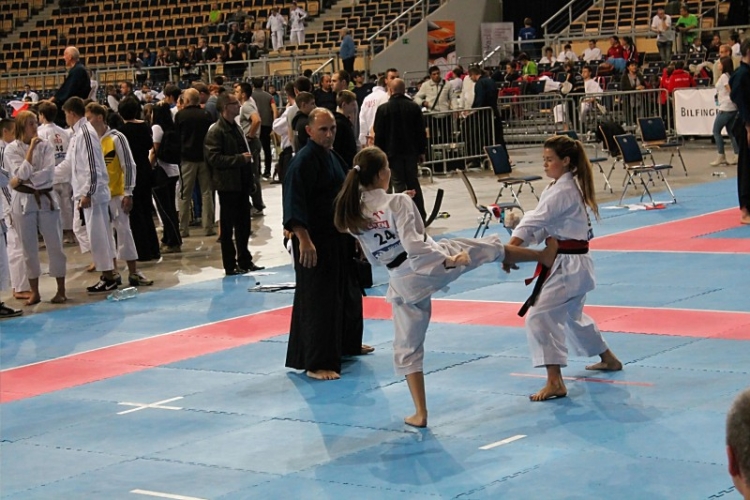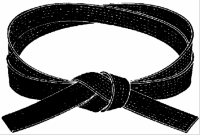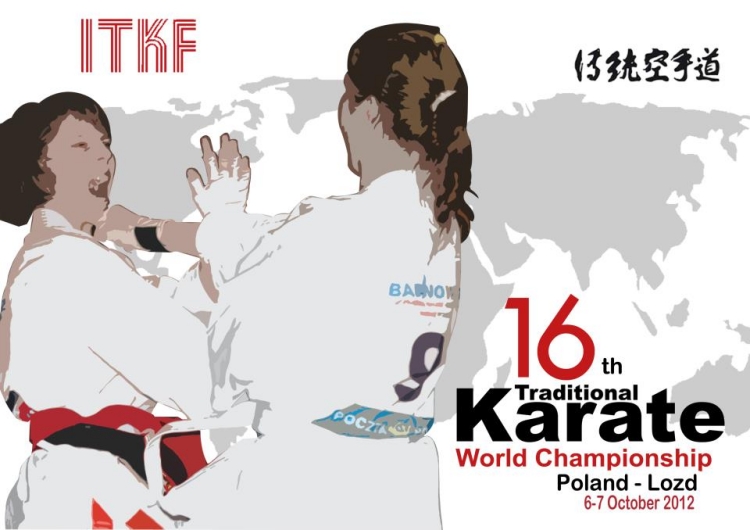Unlocked
updated 7/8/2013
![[Most Recent Exchange Rate from www.kitco.com]](https://www.weblinks247.com/exrate/24hr-euro-small.gif) |
![[Most Recent Exchange Rate from www.kitco.com]](https://www.weblinks247.com/exrate/24hr-jpy-small.gif) |







Cyber Class
Hurry Class is Going to Start
|
Kumite 101
Our Normal Course of action is Kihon and Kata First. Once we have established a strong foundation then we introduce Kumite. Then we just hit a point where the subject must be covered. Here we introduce Kumite to our 4, 5 & 6 year olds. This group "our youngest" group seems to be extremely hard working, receptive to learning with exceptional spirit! They are ITKF World Championships Class of 2022. Parents the world has changed dramatically. Make sure your sons and daughters are thoroughly prepared before you ship them off to college. Traditional Karate must be include in the 3 r's. |
|
Chodźmy |
Ni Późno |
Chodźmy |
|
Ni Późno |
Chodźmy |
Ni Późno |
|
Chodźmy |
Ni Późno |
In Memoriam
(Dan) Stuparu sensei
8th Dan
1951 - 2013
Karate Fun
|
For fun turn play them both at the same time but mute the left screen. |
At 34 seconds one of the musician hits a sour note and the conductor responds then gives a quick glance. |
You Can Change Your Mold
Belt & Gi
|
Belt Tying 101 |
How to Tie Your Belt |
|
How to Roll your Gi |
How to Fix your Gi |
|
Coming Soon Basic Warm Up Standing Who Wants to STAR in this Video? |
Coming Soon Basic Warm on the Floor Who Wants to STAR in this Video? |
|
Coming Soon Basic Kihon Kicks Who Wants to STAR in this Video? |
Coming Soon Basic Kihon Stepping Who Wants to STAR in this Video?
|
Understanding Reaction Force 101
|
Stage 1 49 |
Stage 2 18 |
|
Sit at the edge of a chair. Now pre pare to punch slowly. Repeat the steps of breath, pressure down to the floor, the punch starting immediately then the body contracting at completion. When you ride a bike one pedal goes down and at the same time the other side comes up. So you apply pressure down (pedal down) immediately pressure comes up (pedal up), you create the path for this energy (in this case a punch) in the case of a bicycle the bicycle moves forward. The mechanics of the bicycle stay constant. We too must be constant and move correctly. We then develop skill in the from of correct technique. Sitting in the chair you get the simplest feedback of the correct action and greater understanding in a simple manner. Practice and continue to Stage 2,3 & 4 We are limited in what can describe here. To get a thorough understanding you must take a class on the subject. |
Stage 2 Apply the same principles of stage 1 to stage 2. Practice both stage 1 and 2. Then move on stage 3.
|
|
Stage 3 24 |
Stage 4 26 |
|
Stage 3 In stage 1 you are less likely not to apply the correct principles allowing you to get the correct result. With practice of stage one then moving onto stage 2 if you are mindful you can keep the integrity of correct action. Now in stage 3 you must tune into all aspects of correct technique. We use kibadachi first because it is a symmetrical stance.
|
Stage 4 Now we move on the more complex. In zenkustu dachi, a non symmetrical stance you will not have the same total sensation in the front and back legs as the legs are engaged differently (one bent the other almost straight). We are also adding rotation and reverse rotation to the equation. Yet what you have learned from the previous stages and applying the same principle you should understand the correct method. Now with this foundation practice and apply to all aspect of our Traditional Karate Movement. Continue to go back to stage 1, 2 3 & 4. Each time you will deeper into greater aspects of the totality of this art. A simple class will cover many of the fine point that we are not covering here. |
Studying Alignment
|
Working on Alignment & Control 39 |
To study alignment the Traditional Karate Gi too often covers up too much. We have a "no gi" class where we work on the study of alignment. The girl performing Empi observe just before she make the first rising punch. Notice the misalignment of the back leg, you can see it in the outward position of the knee. It prevents her rotating the hips, it makes a hyper arch in her lower back then it makes her right shoulder rise in the punching arm. You see it again when she does the same move facing the back. You will also see her back foot re position itself due to the torque caused by the incorrect position of the back foot, knee. You can see that the correct position of the foot/knee is crucial in zenkutsdachi, if not you will have a fragmented technique and you are torquing the body which is not healthy. 25 |
The Kinetic Chain
|
The Kinetic Chain is like domino s falling. It's the pathway of our movement. In Kizami zuki Gyaku zuki we follow what know of reaction force. The path way is then from the floor by way of both legs, even though the front leg does not move as opposed to the upper back leg is either rotating or reverse rotating. Remember that the position of the rear knee is crucial as you can see in the video "studying alignment". We now want to be as quick as possible in our action. The quality of a smooth and continuous action will show our level of skill and understanding. If you visualize this Kinetic chain and keeping the time it takes to complete the technique constant, we want to have as many domino s in our pathway (remember the length of time is as fast as possible and constant). The falling domino s must be in order, with out a break or bypassing, in addition the speed accelerates, the fallen domino s continue to support the ones ahead of it. In the video you can clearly see breaks, by passing, a low number of domino s and the lack of the supporting domino s. We will use this feedback to make adjustments
|
More Videos to Follow Stay Tuned |
Pivoting, Turning & Keeping the Back Heel Down While Stepping Back
|
Pivoting |
What the feet should be doing has been a study of mine for many years. From way back when Nishiyama sensei commented on my "heel up". You have seen many students and you can search many videos where even high level Karatekas do what I call "fumbling with the feet". Where the foot is actually preventing a smooth transition in pivoting and or changing directions. It leads to adding an extra action and not being ideally in the next starting position. It can also lead to injury of the ankle, knee, hip and lower back. In this exercise the stepping leg is establishing it's position. It is also creating the front pivot point. We use the heel up to show the moment of the pivot where the balls of both feet pivot at the same time. The feet, the knees, the hips the shoulders and finally the hand technique all move together. The back foot is not "fumbling" or adding resistance to the movement, at the end of the movement the rear foot is in the perfect position for the next movement, the body system is train correctly and healthfully. | More Videos to Follow Stay Tuned |
Stepping Back
|
More Videos to Follow Stay Tuned |
We've seen this a million times. Watch his back heel come up as he steps back. We haven't covered this subject with him yet. We will cover this with him and follow up with a video. |
To Identify Hesitation/ Kyo
27
Kyo is the state of being physically & mentally paralyzed. We must keep our mind and the ability of our movement free. If we are in kyo we must not let it be visible to the opponent. On the other side we must be able to recognize it in the opponent. At another level we can give our opponent as false reading and beware of a false reading or trap (set up). Watch at the end of the video how she's confused of her next movement (there is a small wobble, then a larger wobble, she smiles then laughs), she is in kyo. Notice how much time she is mentally and physically paralyzed (in kyo).
More Vedios to Follow Stay Tuned
Using Video for Corrections
|
|
Using this video to examine the student to evaluate and establish a program to make corrections. |
More Videos to Follow Stay Tuned |
Using Video for Corrections
|
|
Using this video to examine two students side by side to evaluate and establish a program to make corrections. | More Videos to Follow Stay Tuned |
|
|
U | More Videos to Follow Stay Tuned |
Tapping into the
Kami Tanden - Bindi - Ajna - 6th Chakra
|
|
When the mind and the eyes are confronted with something it often travels one of two paths. One negative and the other positive. We must as best as possible see things as they truly are. Here is an exercise where we try to tap into the Kami Tanden. First there is the mental preparation in what we are going to do. Then there is our posture. We need to visualize (imagine) what we are to do and how we are to do it. We now try, get feedback, make adjustments then we develop skill. In this exercise the feedback is taken as a positive as it should be. Far to often people take feedback as negative. In a Traditional Karate class any and feedback should be taken as way of improvement in every aspect imaginable (and unimaginable). Stay tuned for follow up to these 3 videos. |
More Videos to Follow Stay Tuned! |
|
Q: Who are these students? A: Students who are Serious about their Performance |
|
More Videos to Follow Stay Tuned |
|
There are 3 parts to your Exam Kata, Kihon & Kumite Here are ideal examples of the first 5 Heain Katas ~ For Complete Exam Details & Video Please Click our Exam Page www.mbkarateandyoga.com/page89 ~ |
Heain Sho dan 1st Kata
|
Heain Ni dan 2nd Kata
|
|
Heain San dan 3rd Kata
|
Heain Yon dan 4th Kata
|
Heain Go dan 5th Kata
|
Purple Belt Kata
|
Purple Belt - 4th Kyu Tekki Sho dan |
|
|
|
Brown Belt Katas
|
Bassai dai 70 - 79 Year Old Division Please no Excuses "I'm too Old" |
Kan ku dai |
|
Jion Please no Excuses on "I can't do This or That". |
Empi |
|
Hangetsu |
Jitte |
Black Belt Katas
|
Sochin |
Unsu |
Go jyu shi ho sho |
|
Ni jyu shi ho |
Kanku sho
70 - 79 Year Old Division Please no Excuses on "I'm too Old". |
Go jyu shi ho dai |
|
Chinte |
Meiko |
|
|
Gankaku |
Bassai sho |
Special Kata
"Kitei"
Used in the "Fukugo" Competition Event
Cyber Class Introduction
The Secret to Keeping the Back heel Down is . . .
Unsoku (Footwork) - Matching the Movement of the Feet with a Technique
&
Understanding Correct Body Movement - Knowing the Relation of the Feet, the Knees, the Hips & Shoulders
| |
|
 |
Sensei had a certain curriculum. From time to time he would see a student take interest in a particular subject. Sensei would then incorporate "that subject" into the curriculum.
There was a time when sensei was really impressing the point of keeping the back heel down at the point of Kime. A while back during the judging portion of the ITKF International Summer Camp he would stress this. Around that time this was a strict point amungst all judges. Somewhat recently it has become a relaxed point, if not forgotten.
Years ago during competition I was not awarded many points due to "Heel Up", "Tachi". At Regional & National Competitions it was almost to the point that no matter what I did the judges would automatically not award me a point. I became notorious.
So then it now became a point of personal study.
I was very fortunate in that I had many people to study. Those at Central Dojo, ITKF Seminars, Tournaments. So I studied everyone around me and I mean everyone (and as you can imagine there were many around me to study).
What I noticed was that except for 3 people (of course one of them was sensei) that I have personally witnessed EVERYONE else had their heel up. So as it turned out everyone did it, it's just that I stood more than the others.
Sensei had a drill "Face Wall" where we would face the front wall (a few steps back). We would do a series of combinations, ending with a final technique, ending an inch from the wall with full Kime. Over the years the drill had different subject points.
So we're doing this drill, sensei commands to me (as he did often) "Heel, Heel Nick". Was he setting me up to make this a point of personal study?
There was a point in time where I slowed down (as we're doing the drill) and began to study placement of the back heel at the point of Kime.
Sensei noticed that while he had commanded to go fast and strong, that I would go slow. He could tell that I was into some deep study. He left me alone in my study. I'm looking at everyone around me and at point of Kime I see everyone with their heel up.
Then fast forward in time, sensei could see that I was making progress on my study. If I let up he would always catch me shout out "heel Nick". He keep a very tight leash on me and gave no slack. As my study continued to make great progress sensei introduced in a larger scope "Unsouku" (footwork).
I then expanded my personal study of heel down with the many points of Unsouku as they go hand in hand.
I have spent many years on this subject and continue to do so. With my findings it has accelerated placing the missing pieces of the puzzle.
I have taught this to my students. The one who know it best is the one who shows up the most (number one rule in Karate - "Don't Miss").
Keeping the Heel Down is matter of a slight adjustment to way we move. It has an element of being counter intuitive (as a higher level of development has inherent to it). The beauty is that like so many other things in Nishiyam's Karate "its simple".
Stay tuned - to be continued and expanded. For questions and comments you can contact me at nkper310@yahoo.com
We will be adding Video and more Explanation on the Subject.
|
Future Video Movement Start |
Future Video Movement Intra Movement Change |
Future Video Movement Finish |
* * *
|
Interesting Miscellaneous Videos Click www.mbkarateandyoga.com/page83
|




